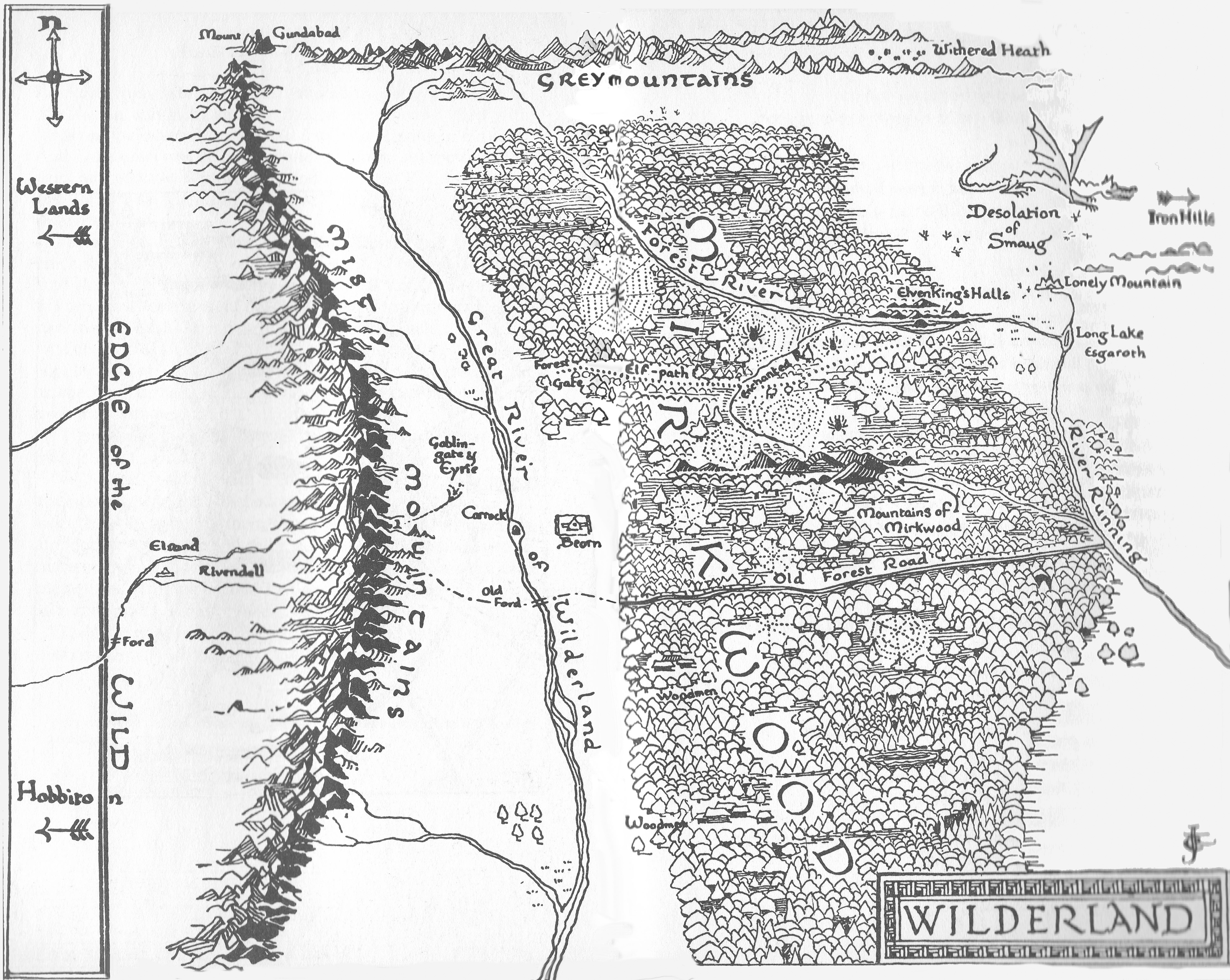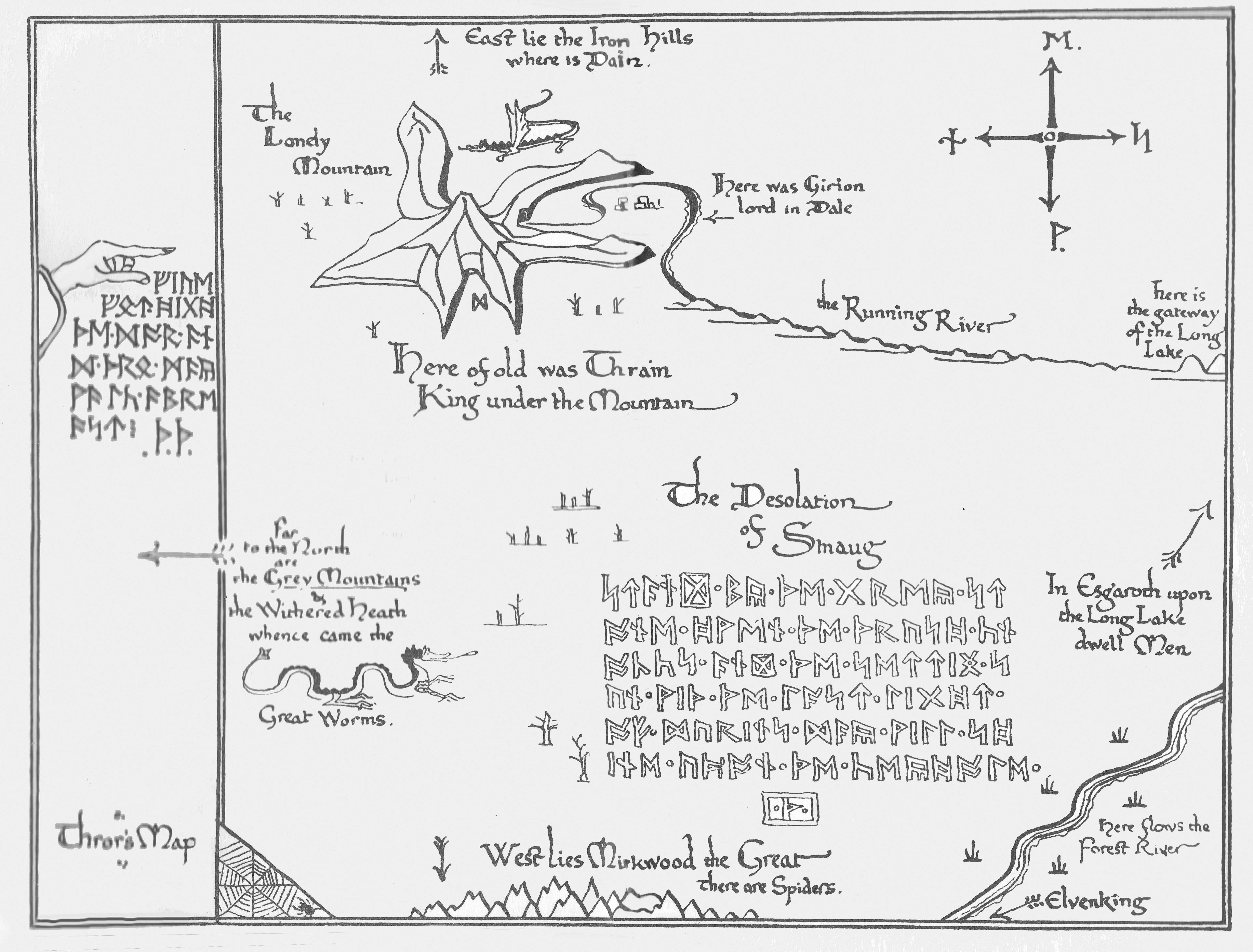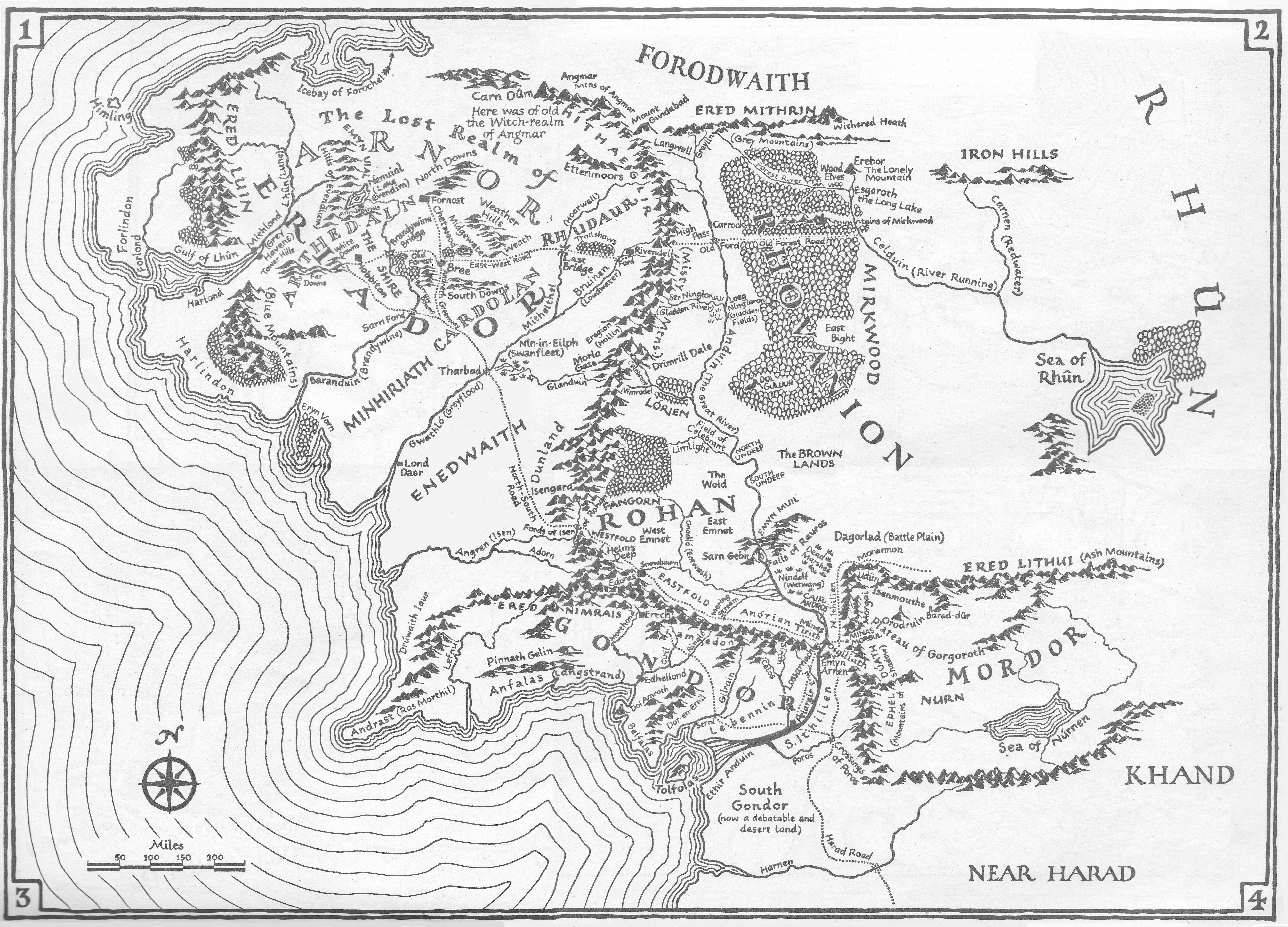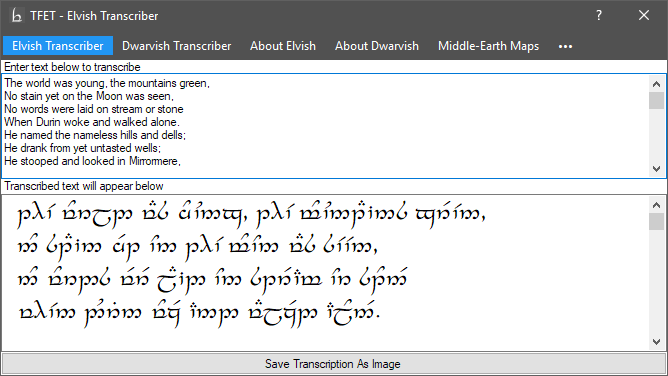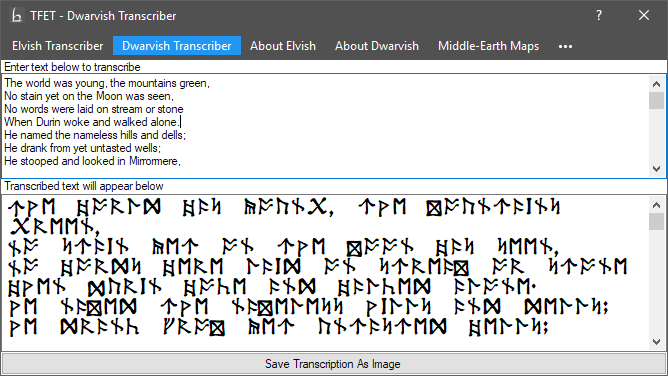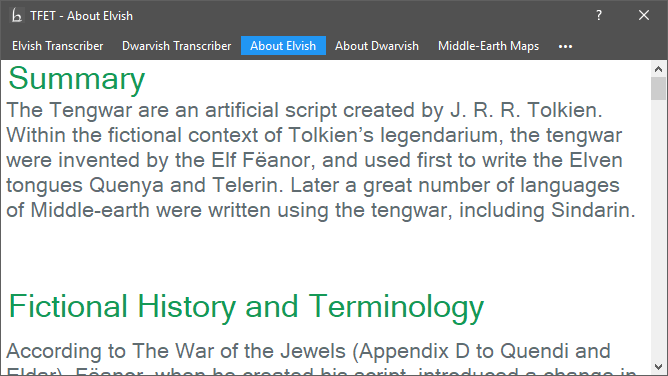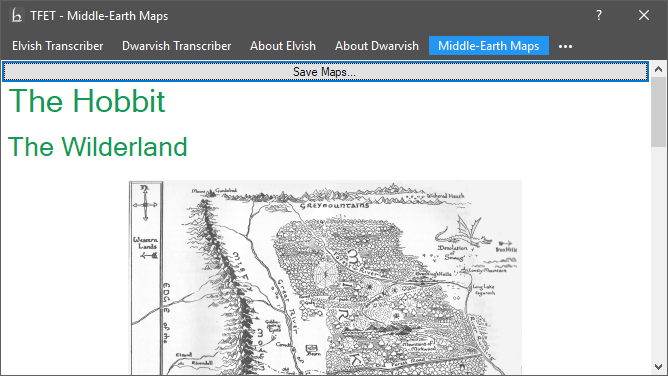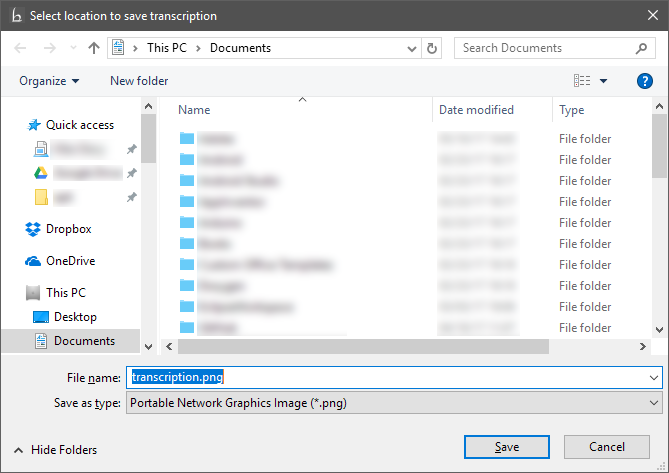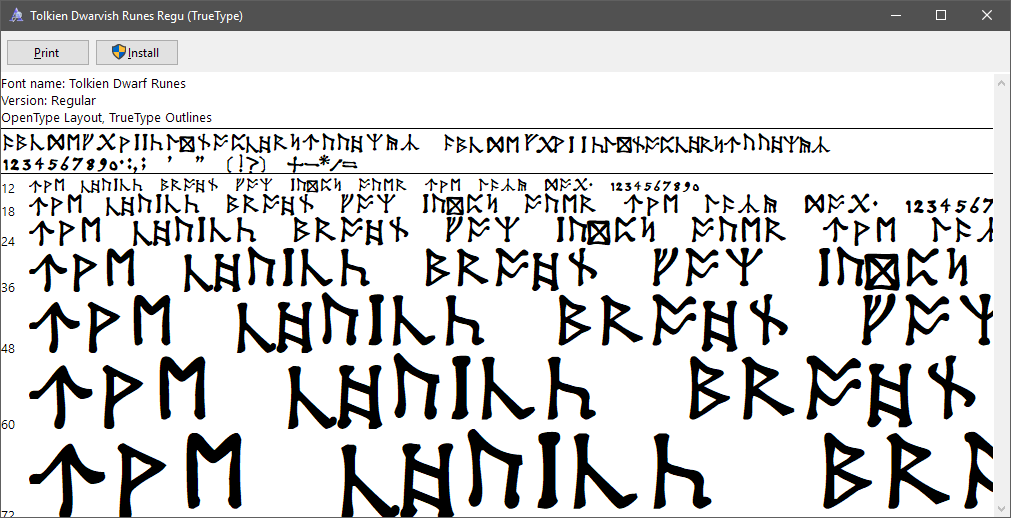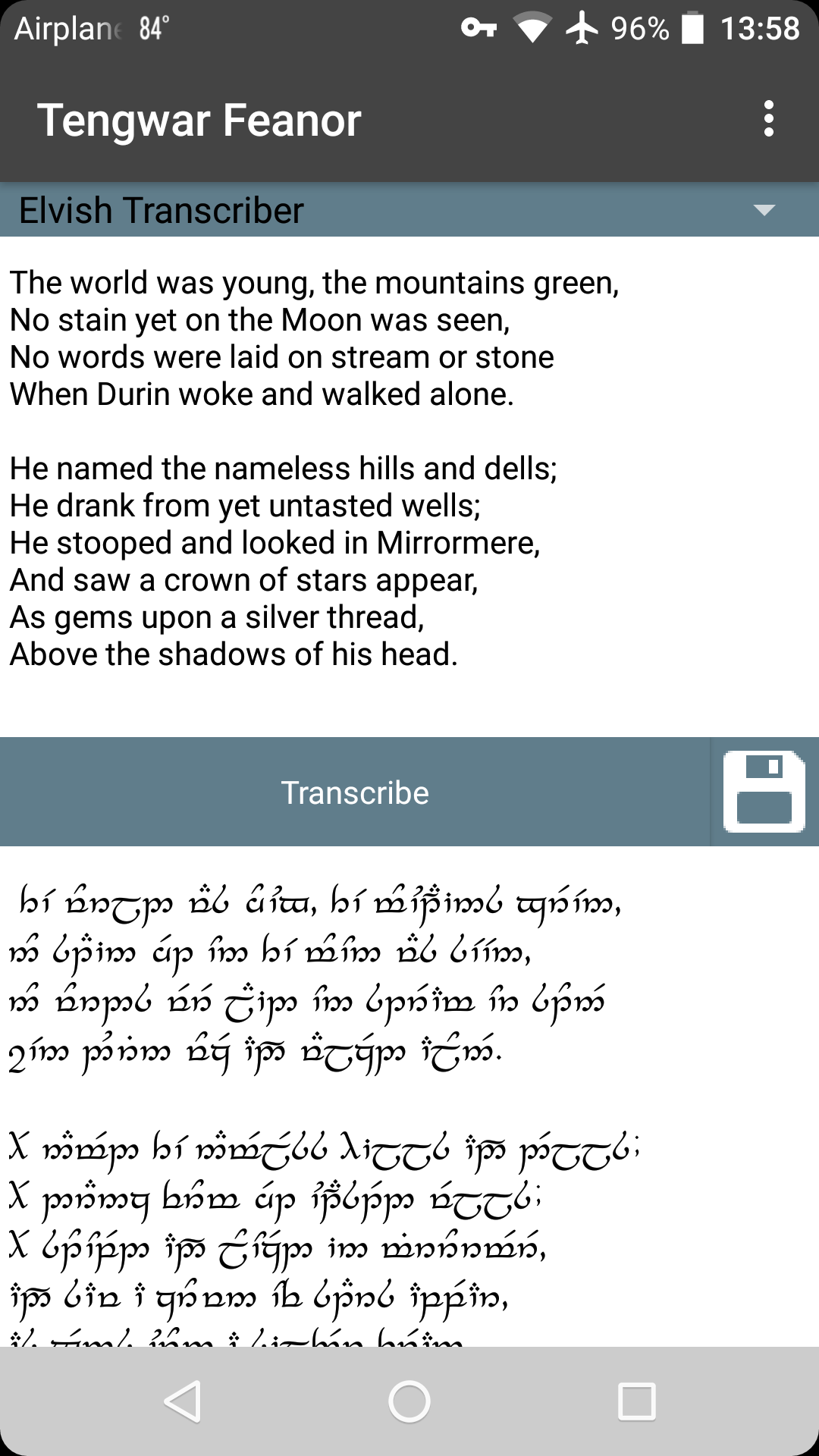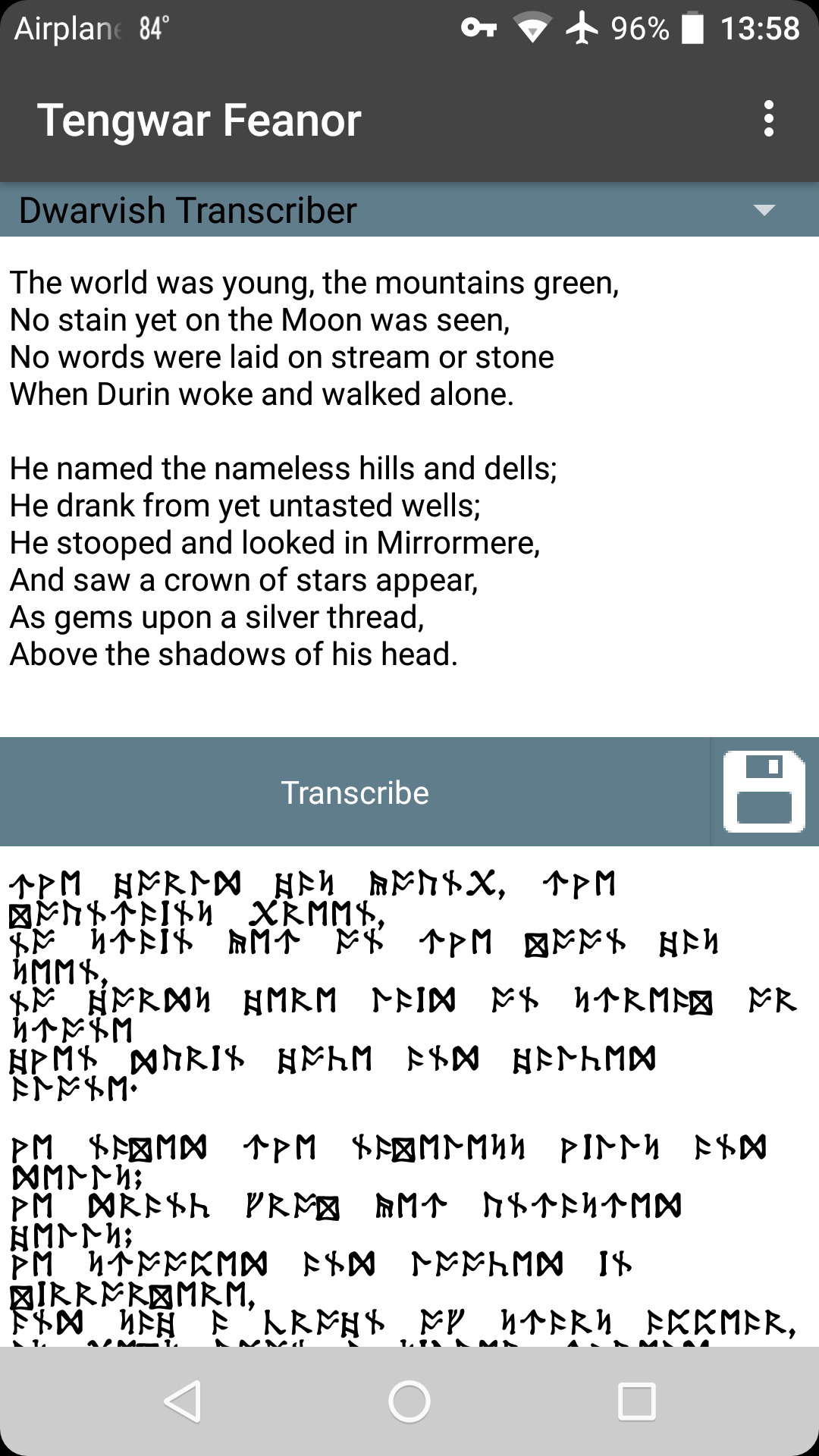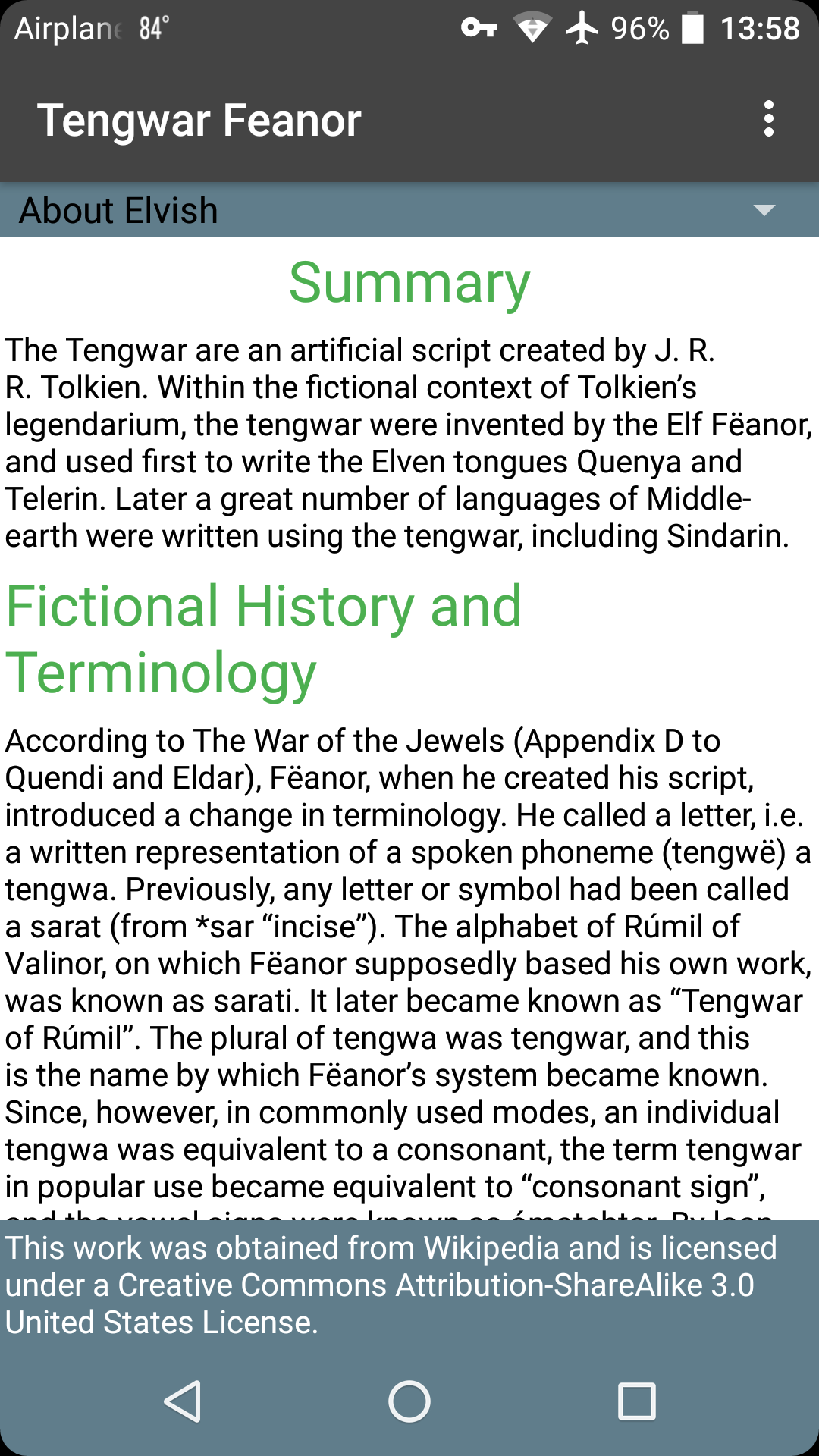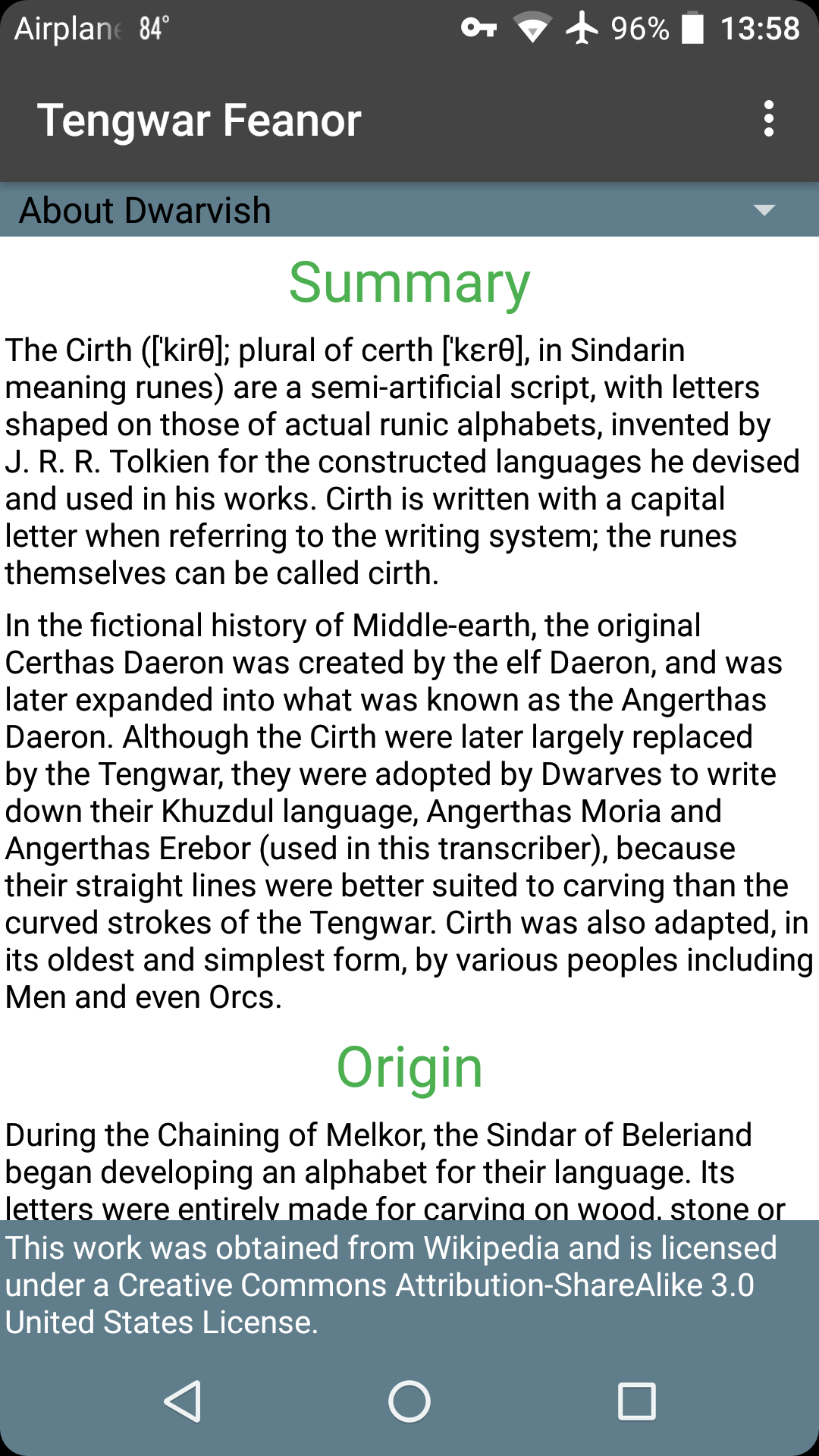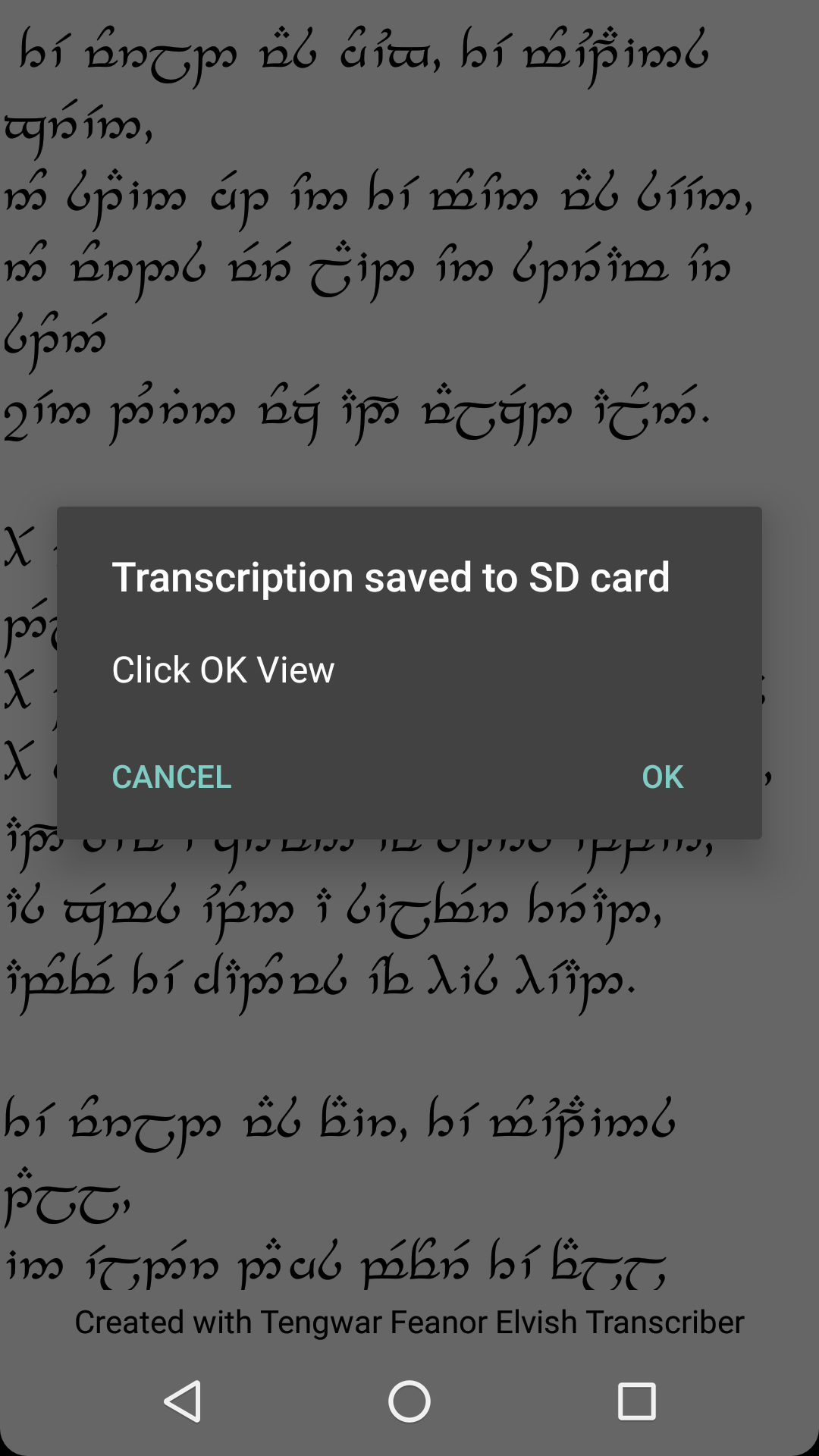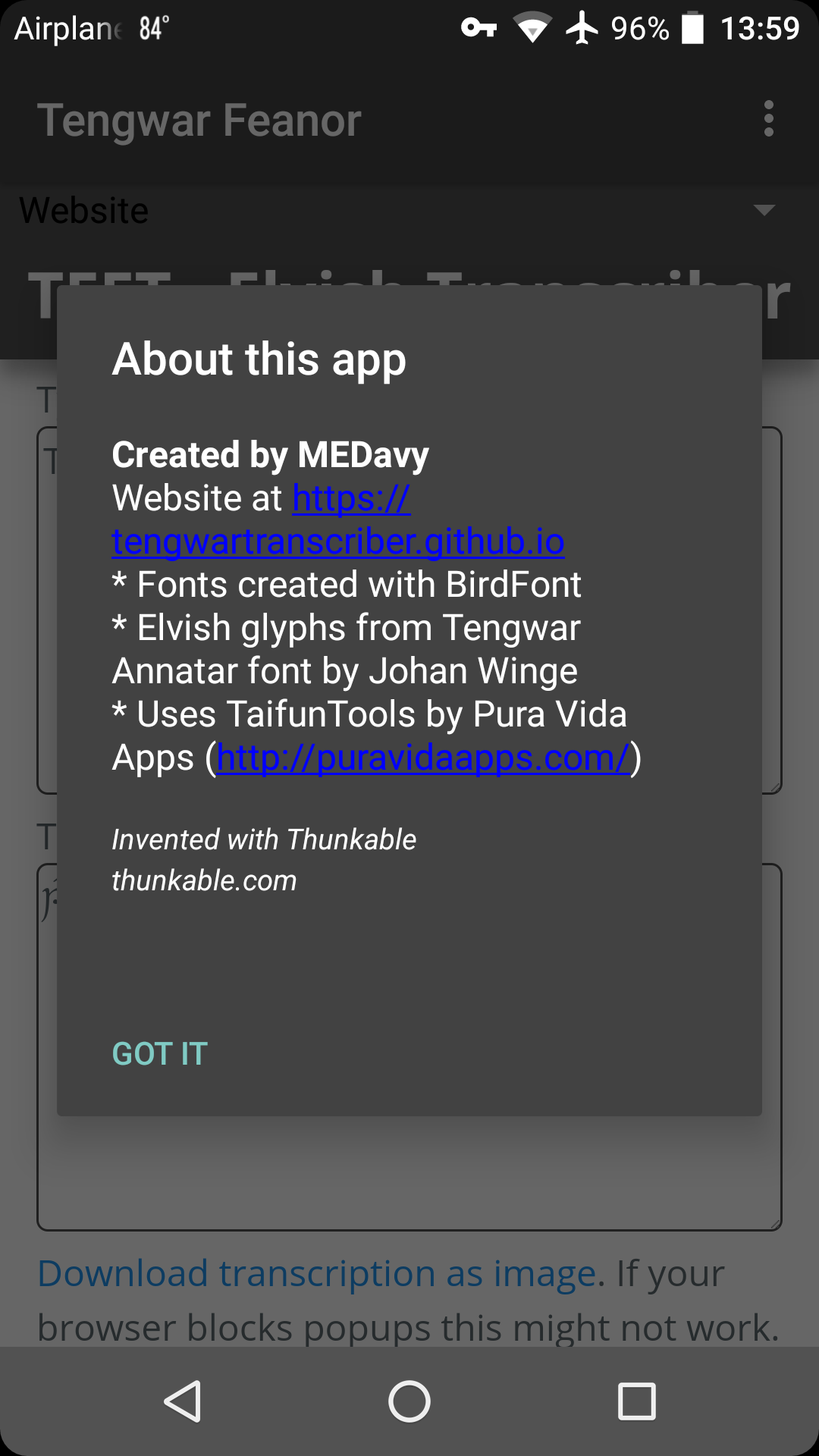Elvish Transcriber
file_downloadtranscribe to Elvish
above will appear here
About Transcription
Unlike Latin characters, the Feanorian letters always make the same sound. For example, there is a Tengwa for the ‘SH’ sound. Since it would be impossible for this transcriber to determine which sound a letter makes (short of having a complete Tengwar/English dictionary), it uses the most common sound of each letter. If you are using Chrome, Opera, or Firefox, the transcriber does in fact transcribe ch, sh, ng, etc. to their proper tengwa. If you are using another browser, the transcriber will use the separate tengwa for c and h, etc. To make the transcribing most accurate, spell everything phonetically. Use a capital ‘S’ when s sounds as it does in ‘Charges.’
Browser Compatability
Tengwar Transcriber works best in Chrome, Opera or Firefox. Safari, Edge, and Internet Explorer do not support all features.
About Elvish
According to J. R. R. Tolkien's legendarium, the lettering system known as the Feanorian letters or "Elvish" was brought to Middle-earth by the exiled Noldor. The consonantal signs are called Tengwar (singular Tengwa) and the vowel sounds are represented by tehtar (singular tehta), which are placed over the previous consonant or a carrier, which looks like an ‘i’ without a dot.
The Feanorian letters were designed to be adapted to represent different languages, so there were different methods, or modes, for writing in Quenya, Sindarin, Westron, Black Speech, etc. There is no mode for representing English; the one designed for use here is substantially similar to that used by other transcribers. Full article here. More complete information can be found in appendix E of The Lord of the Rings. Wikipediaand Lord of the Rings Wikiaalso have good articles.
Credits
Site theme created with Material Design Lite
Site hosted on Github Pages
Fonts created with Birdfont, a free font editor by Johan Mattsson
Elvish glyphs originally from Tengwar Annatarby Johan Winge
